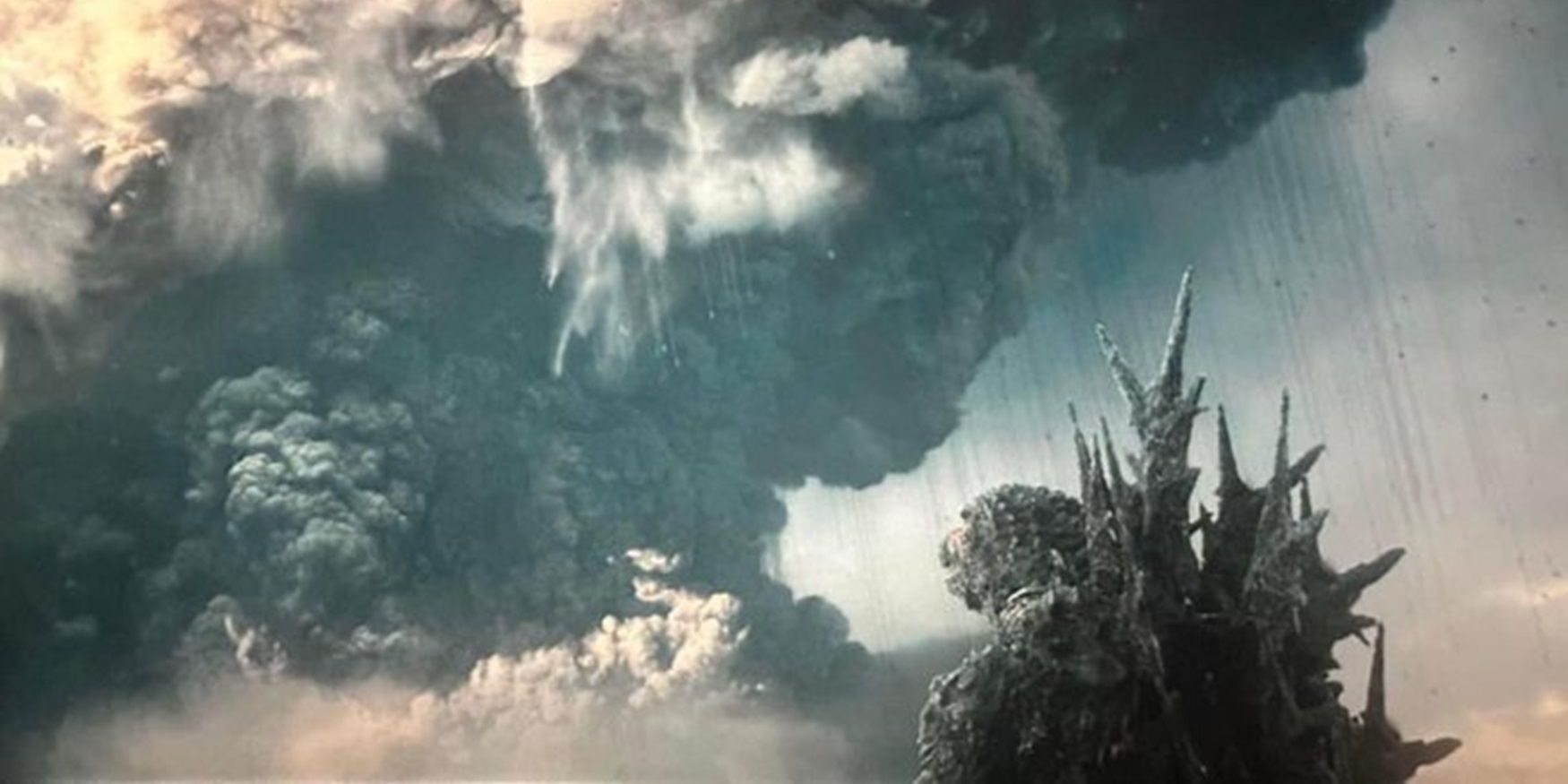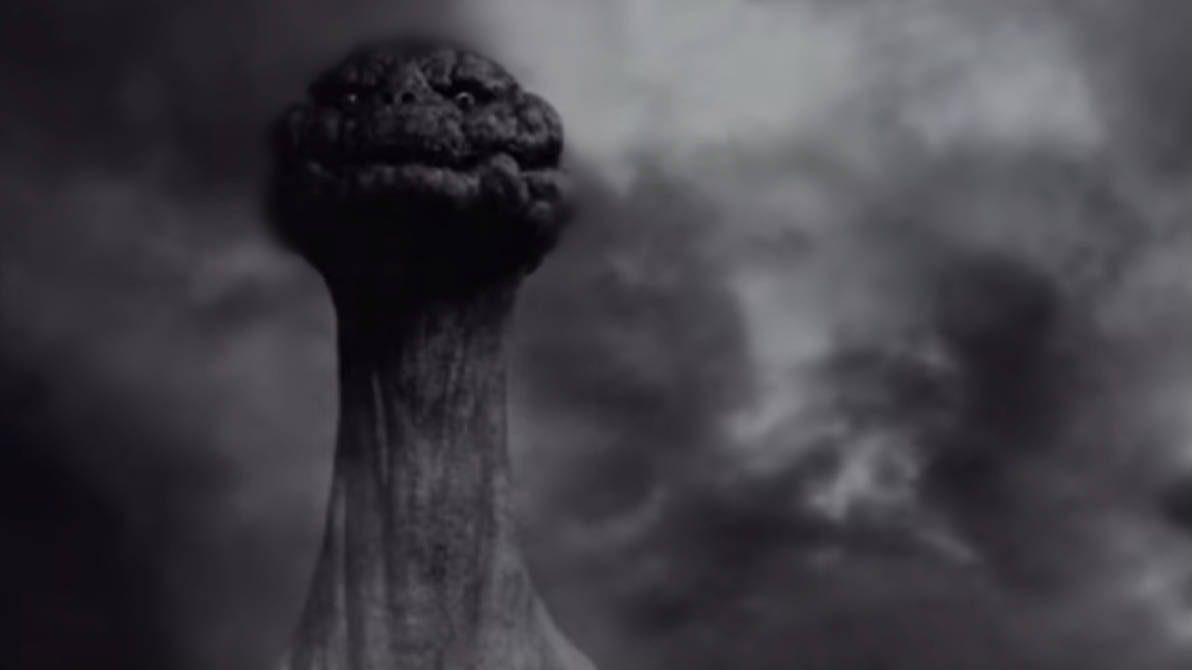Mushroom Cloud Godzilla - Unpacking A Nuclear Symbol
Table of Contents
- Unpacking the Idea of a Mushroom Cloud Godzilla
- Where Did the Idea of Godzilla and Nuclear Explosions Begin?
- Early Designs and the Mushroom Cloud Godzilla Concept
- Fan Creations and the Enduring Mushroom Cloud Godzilla Image
- How Do Modern Films Handle Godzilla's Destructive Look?
- What Powers Might a Mushroom Cloud Godzilla Possess?
- Talking About Godzilla - The Community View on Mushroom Cloud Godzilla
- Beyond the Monster - A Look at Actual Mushrooms
Unpacking the Idea of a Mushroom Cloud Godzilla
It's a strange thought, isn't it? A giant monster, a force of nature, with a head shaped like the terrifying aftermath of an atomic blast. This idea of a "mushroom cloud godzilla" might sound like something from a wild dream, but it's actually a concept that has floated around the world of this famous creature for a while. We're going to take a closer look at where this unsettling image comes from and what it means for the king of the monsters.
For many, the very name "Godzilla" brings to mind massive destruction, a creature born from the fears of a world that had just seen the raw power of nuclear weapons. It's almost as if the creature itself is a walking, breathing reminder of those events. This connection, you know, between Godzilla and the atomic age, is really at the heart of why the "mushroom cloud godzilla" idea even makes sense to people.
We'll explore the original thoughts behind Godzilla's look, some early ideas that never quite made it to the screen, and how fans have imagined their own versions of a "mushroom cloud godzilla." We'll also touch on what makes a monster truly terrifying and how the imagery of a nuclear explosion ties into that, as a matter of fact. Plus, we'll take a little detour into the fascinating world of actual mushrooms, just to give us a bit of a break from all the monster talk.
- Maye Musk Younger
- Linda Hunt Net Worth
- Shampoo For Hair Growth And Thickness
- Is Trina Married
- Ella Langley Relationship With Riley Green
Where Did the Idea of Godzilla and Nuclear Explosions Begin?
So, when you think about Godzilla, especially the very first one, it's pretty clear there's a deep link to nuclear warfare. From what many have heard, the creature was, in some respects, a direct response to the atomic bombings that happened during that time, particularly in Hiroshima. It's not just a monster for monster's sake; it's a reflection of a real-world horror that left a lasting mark on history. The very idea of Godzilla, you know, was born from that very specific, very scary moment in time.
The original movie, in a way, served as a powerful commentary on the dangers of atomic energy. Godzilla wasn't just a big lizard; he was the physical embodiment of humanity's destructive capabilities. His arrival and the chaos he brought were a constant reminder of the terrible consequences of unleashing such forces. This connection, in fact, is what makes the concept of a "mushroom cloud godzilla" feel so right to many, because it directly links his appearance to his origins.
It's interesting to consider how the public at the time might have viewed this creature. For a nation that had experienced the atomic bomb firsthand, a monster born from such an event would have resonated deeply. It wasn't just a movie; it was a way to process a collective trauma. The monster's destructive capabilities, which were quite shocking for the time, were a mirror of the destructive power that had been witnessed, truly.
- Holly Siriusxm
- Current Pics Of Meg Ryan
- Who Is Michael Strahan Dating
- Blue Whale Next To A Human
- Patriot Games Actors
Even in more recent films, like "Minus One," there's a clear effort to go back to these original roots. That film, apparently, went back to the drawing board to show what people could use, what people could accomplish, and what they could lose when faced with such immense power. It's a continuous thread that runs through the character's history, always connecting him back to the nuclear fears that first gave him life. Godzilla’s destructive power is iconic, more than just simple brute force; it carries a lot of meaning.
Early Designs and the Mushroom Cloud Godzilla Concept
Believe it or not, there was an actual concept for a "mushroom cloud godzilla" for the very first 1954 film. This wasn't just a random idea; it was a deliberate choice by the creators to make the monster's appearance reflect its terrifying origins. The initial thoughts for his look were, in some respects, much more literal in their representation of a nuclear explosion. It's almost as if they wanted to leave no doubt about what he represented.
There was an earlier, rejected concept that did specifically try to make his head resemble that iconic shape. While that particular design didn't make it into the final movie, the intention was clear. His head and neck were meant to literally look like the mushroom cloud of a nuclear explosion, further cementing the dark symbol that Godzilla represents. They rejected this specific design, but they certainly followed up on the overall idea of his connection to nuclear events in other ways.
In fact, some sources suggest that the final design for ShodaiGoji, the very first Godzilla, was always meant to mimic a mushroom cloud, even if it wasn't as overtly obvious as the rejected concept. This subtle nod still conveyed the same message, allowing the audience to make the connection without it being too on-the-nose. It’s a pretty clever way to embed a deep meaning into a creature’s appearance, you know.
The fact that this imagery was considered so early on shows just how deeply intertwined Godzilla's identity is with the atomic bomb. It's not just a visual choice; it's a foundational element of his character. The creature is, in a way, a walking, breathing monument to the destructive force that brought him into being. This connection, in fact, is a big part of what makes Godzilla so enduring and powerful as a cultural figure.
Fan Creations and the Enduring Mushroom Cloud Godzilla Image
It's not just the original creators who have played with the idea of a "mushroom cloud godzilla." The concept has really taken hold among fans, too. There is a fan Godzilla that is also based on a mushroom cloud, showing just how much this imagery resonates with people who love the character. It's a powerful visual that speaks to the core of what Godzilla stands for, a symbol of immense, uncontrolled power.
When fans create their own versions, they often lean into the most striking aspects of the character. And for many, that striking aspect is his origin story and the visual representation of nuclear destruction. So, it's not surprising that artists and creators in the fan community would take that rejected concept and bring it to life in their own ways. These fan interpretations often highlight the more terrifying aspects of Godzilla, pushing the boundaries of his design.
You might even see images of a "mushroom cloud godzilla" that look truly terrifying. One might expect such a creature to move in a very particular, perhaps unsettling way, like those titans from a certain popular anime series, for example. The visual impact of such a design is hard to ignore, and it really drives home the message of what Godzilla represents: a force born from a terrible, destructive event. It’s a pretty stark reminder, really.
The continued popularity of this concept among fans shows that the core message of Godzilla, as a creature tied to nuclear devastation, remains as relevant as ever. It's a powerful visual shorthand for his origins and his role as a warning. The idea of a "mushroom cloud godzilla" is, in some respects, a direct, unfiltered expression of that core identity, a literal manifestation of his nuclear birth.
How Do Modern Films Handle Godzilla's Destructive Look?
So, while the original film had concepts for a very literal "mushroom cloud godzilla," the final movie's design for Godzilla's head isn't meant to resemble a mushroom cloud in a direct way. This is a point that some people, like those who consider themselves Godzilla historians, might point out as not being exactly 100% true if you claim the final design *is* a mushroom cloud. The designers, you know, chose a slightly different path for the creature's overall look.
However, the underlying theme of nuclear power and its destructive potential remains very much a part of Godzilla's character, even in modern interpretations. Films like "Minus One," for example, really leaned into this. That movie was, apparently, going back to the drawing board to show what people could use, what people could accomplish, and what they could lose when dealing with such immense forces. It's a constant reminder of the creature's origins and the lessons he represents.
Godzilla’s destructive power is iconic, more than just a big stomp. It’s tied to his atomic breath, which can cause massive explosions, sometimes even resembling a mushroom cloud itself. So, even if his head doesn't look like one, his actions often create that very imagery. This connection keeps the "mushroom cloud godzilla" idea alive in the minds of viewers, even if it's through his abilities rather than his literal appearance.
The creature's immunity to modern-day Japanese weaponry and his ability to absorb energy attacks further solidify his role as an unstoppable force, a direct consequence of humanity's actions. These powers, you know, make him feel like a force of nature that cannot be contained, much like the power of a nuclear explosion. The imagery of a "mushroom cloud godzilla," whether literal or symbolic, continues to be a very strong part of his identity.
What Powers Might a Mushroom Cloud Godzilla Possess?
If we were to think about a "mushroom cloud godzilla" and what kind of abilities it might have, we can draw from various interpretations of the monster. For example, some versions of Godzilla have incredible resilience. This creature could have immunity to modern-day Japanese weaponry, making it nearly impossible to stop with conventional means. This would really emphasize its unstoppable nature, in a way, born from something that humanity can't control.
Another key ability that fits with the nuclear theme is energy attack absorption. Imagine a "mushroom cloud godzilla" that could take in energy directed at it and then use that power for its own devastating attacks. This would make it an even more formidable opponent, turning humanity's own efforts against them. It’s a pretty terrifying thought, actually.
And of course, the most direct connection to the "mushroom cloud" concept would be its atomic breath. This version of Godzilla could cause a mushroom cloud with his atomic breath, making his signature attack a literal manifestation of his nuclear origins. We've seen Godzilla vaporize foes, like Baragon, with his atomic breath, so the idea of him creating a mushroom cloud with each blast is not that far-fetched, you know.
The visual of "mushroom cloud goji" looks terrifying from the images, and his movements might even be unsettling. One might expect him to walk like those titans from a popular anime, perhaps with a slow, deliberate, yet incredibly powerful stride. These kinds of abilities and physical traits would really bring the concept of a "mushroom

Godzilla Minus One Summary, Trailer, Cast, and More

Legendary and shin meet mushroom cloud Godzilla 06 by ADYCdeviantart on

Mushroom cloud Godzilla | All godzilla monsters, Kaiju monsters, Kaiju art